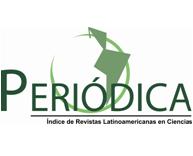OPTIMIZATION OF THE TECHNOLOGY FOR THE PRODUCTION OF PROPOLIS TINCTURE
Keywords:
quality indices, propolis, processing technology, tinctureAbstract
Introduction:
The propolis tincture produced in the Local Production Centers (CPL) of Villa Clara province is in high demand due to its diversity of uses. The total solids content of this product is proving to be less than 10% (permissible limit).
Objective:
To optimize the processing technology of propolis tincture for pharmaceutical purposes, used in the CPLs of Villa Clara.
Materials and Methods:
A design of 23 factorial experiments was carried out. The independent factors and their levels were: type of solvent (low level of 70% ethanol and high level of 96% ethanol), extraction time by maceration (7 days low level and 14 days high level) and variety of propolis (brown color low level and reddish brown high level). The response variable to considered was the total solids content. Other quality indexes evaluated were: relative density, refractive index and pH.
Results and Discussion:
A high total solids content (23.02%) was obtained for the condition where reddish brown propolis, 96% ethanol as solvent and extraction time of 7 days were used. The pH, refractive index and relative density of the tincture gave similar results to those of other tinctures of natural origin reported in the literature.
Conclusions:
The solvent concentration, propolis variety and extraction time significantly influence the total solids content. The tincture obtained from reddish-brown propolis after 7 days of maceration and 96% ethanol, doubles the minimum permissible limit of total solids.
Downloads
Downloads
Published
How to Cite
Issue
Section
License

This work is licensed under a Creative Commons Attribution-NonCommercial 4.0 International License.




















